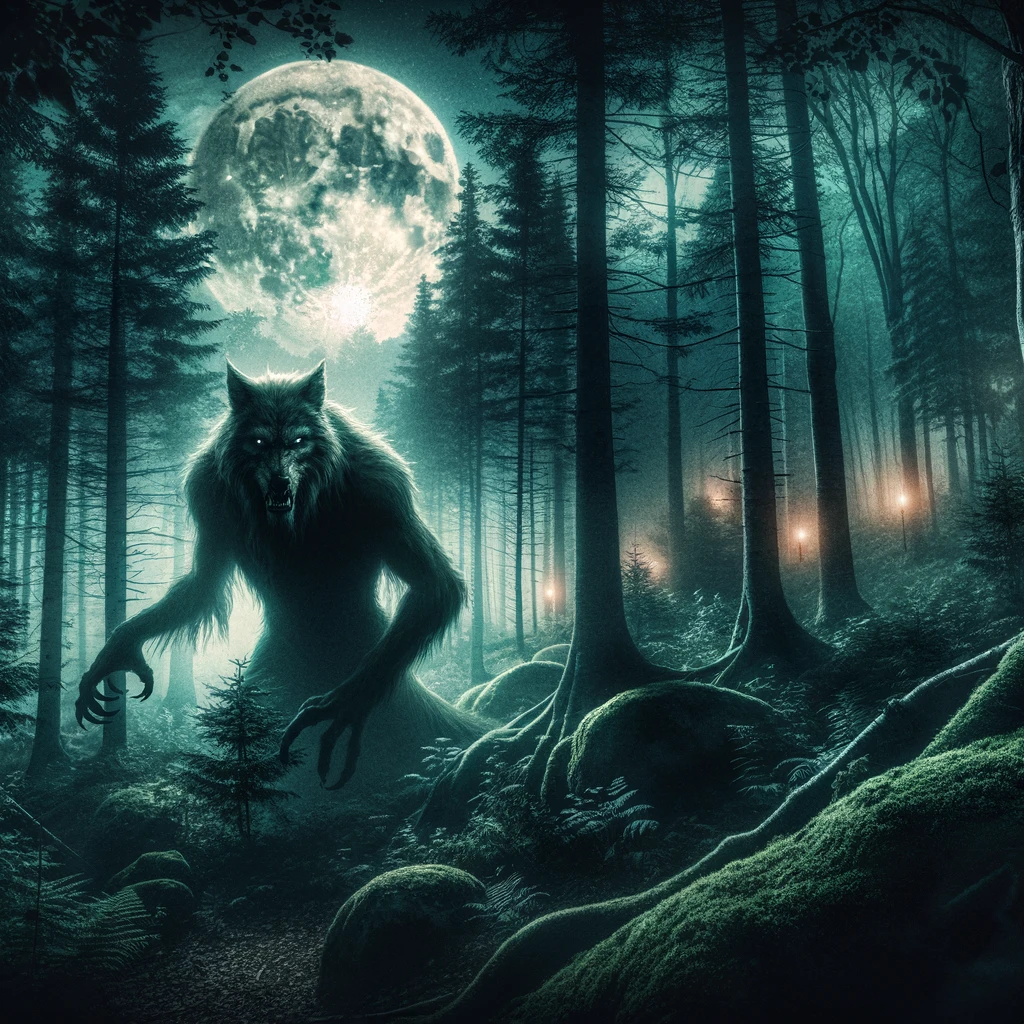In the heart of Quebec’s sprawling forests and the shadowed lanes of its ancient villages, a legend has persisted through the ages, whispered during moonlit nights and around crackling campfires. This is the tale of the Loup-garou, a fearsome creature that is part man, part wolf, and wholly engrained in the cultural fabric of French-Canadian folklore.
The Origins of the Myth
The legend of the Loup-garou was not born in the New World but rather sailed across the Atlantic with the earliest French settlers. Drawing from European werewolf myths, the Loup-garou quickly found a fertile ground in Quebec, where the vast, unexplored wilderness and the blending of French and Indigenous cultures created a unique variant of this ancient lore.
At its core, the Loup-garou story is a cautionary tale, often serving as a moral compass for the community. It was said that those who skipped Mass for seven consecutive Sundays or engaged in other sinful behaviors risked being cursed to transform into a Loup-garou. The curse could last for years, only lifting if the afflicted could transfer it to another by drawing another’s blood without revealing their cursed state.
Characteristics of the Loup-garou
The Quebecois Loup-garou shares many traits with its European counterparts, including the transformative ability between human and wolf under specific conditions, such as the full moon. However, the Quebec version of the creature is often depicted with more nuanced characteristics, including the ability to speak and retain human consciousness while in wolf form.
These beings are not only feared for their physical strength and predatory nature but also for their cunning and the ability to blend into human society. Legends tell of Loup-garous infiltrating villages, their identities known only by a few discerning individuals capable of spotting the subtle signs of their curse.
The Cultural Impact
The Loup-garou legend has had a significant impact on Quebec culture, serving as a rich source of storytelling, moral lessons, and community bonding. It reflects the historical context of Quebec, from the trials of early settler life to the blending of different cultural influences, including French, Indigenous, and later English.
Today, the Loup-garou endures in popular culture, from literature and films to Halloween costumes and themed events. It represents a connection to the past, a nod to the human capacity for transformation and redemption, and a playful engagement with the supernatural.

The Loup-garou of Quebec is more than just a cryptid or a mythical creature; it is a symbol of Quebec’s cultural heritage and its people’s imagination. It serves as a reminder of the mysteries that lie in the untamed wilderness and the shadows of human nature. Whether as a cautionary tale of morality, a thrilling story to be told in the dark, or a fascinating element of folklore, the legend of the Loup-garou continues to captivate and intrigue to this day.
